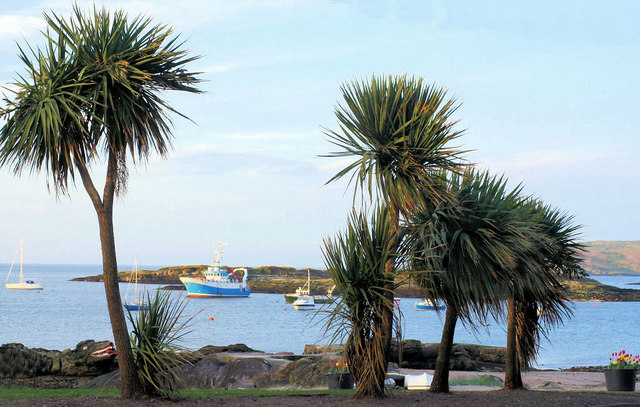Great Cumbrae is an island which is accessible by ferry
from Largs. The island offers a variety
of outdoor activities and a range of wildlife including eagles, polecats,
seals, basking sharks and dolphins. The
island's main settlement is Millport, a resort set on a lovely bay. The town's main claim to fame is that it is
home to Britain's
smallest cathedral, known as the Cathedral of the Isles, designed by the Gothic
Revival architect William Butterfield and completed in 1851. The miniature theme continues in Stuart Street with
a building called The Wedge, which at a mere 47 inches wide has the narrowest
street frontage in Britain. The Garrison House in Millport houses the
Museum of the Cumbraes, with fascinating displays of the history of the island
through the ages, from coffins found on the island dating back 4,000 years, to
smuggling tales from the 18th century and descriptions of life on the island
during World War II. The building itself
has a smuggling connection, in that it once housed the crew of an
anti-smuggling Revenue sailing ship, the Royal George. The Robertson Museum and Aquarium showcases the island's marine life and local habitats. About half a mile south of Great Cumbrae is its little brother, Little Cumbrae or the Wee Cumbrae as it is known locally, which itself has a little brother called Castle Island on which a ruined 16th century castle stands. Little Cumbrae has two lighthouses, the older of which was the second lighthouse to be built in Scotland, dating from 1757. The "new" lighthouse was built in 1793 by Thomas Smith and Robert Stevenson.
Live streaming webcam view of Millport Bay, courtesy of Mapes of Millport.
Map of the island
 | |
|
Millportbay. Photo by Johh McLeish, via Wikimedia Commons
|
No comments:
Post a Comment